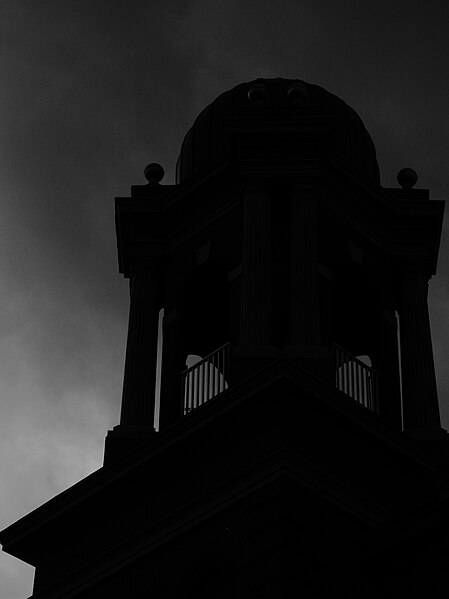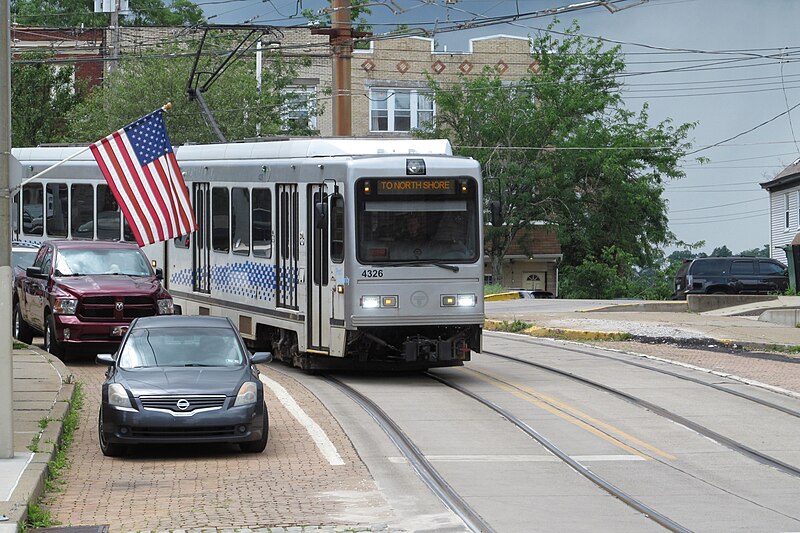
-
Temple B’nai Israel, McKeesport

This gorgeous synagogue in the style old Pa Pitt calls Jewish Romanesque is fortunately owned by a church that obviously appreciates the building and has not altered its Jewish ornamentation. Father Pitt’s apologies for the lighting; the sun was from the wrong direction, but our cameras did their best.
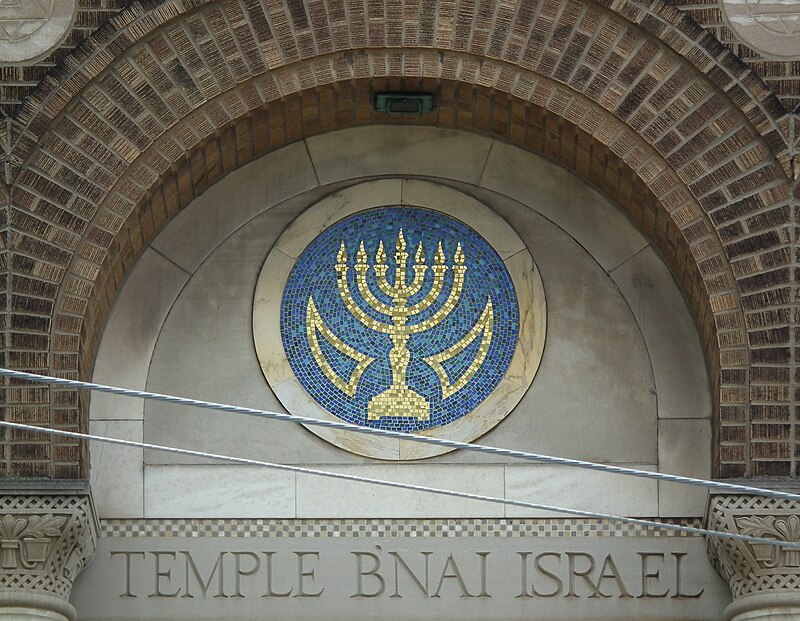

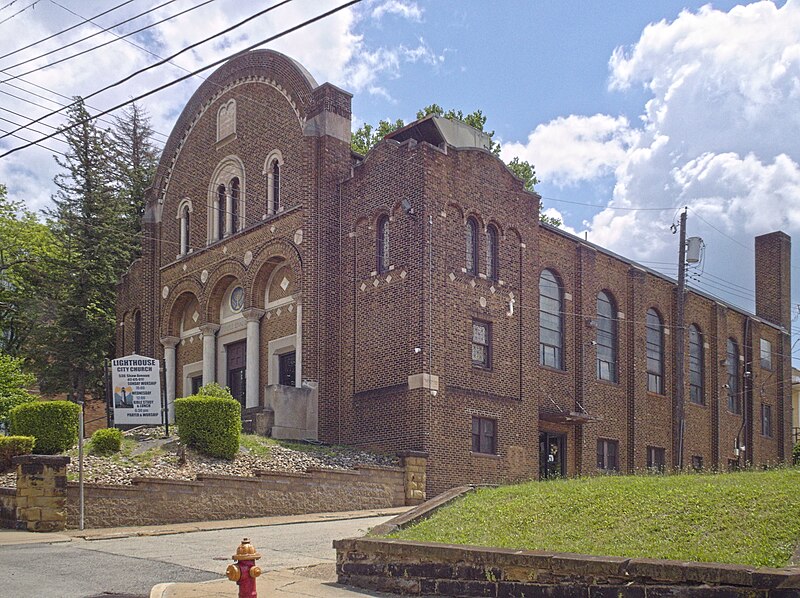

The cornerstone gives us a date of 1922 (or 5683) for the building and 1912 for the foundation of the congregation. Temple B’nai Israel was the first Reform congregation in McKeesport, and the congregation still exists, though in 2000 it moved to White Oak. The Temple’s Web site has a timeline of the congregation’s history. (Update: The congregation has decided to wind down operations and close in 2025.)
The Heinz History Center owns a commemorative plate from 1962 for the “Golden Anniversary” of the congregation; it has a picture of the building, and a misprinted foundation date—“1902” instead of 1912, though the words “GOLDEN ANNIVERSARY” are right above it.
One response
-
Old Post Office, Homestead
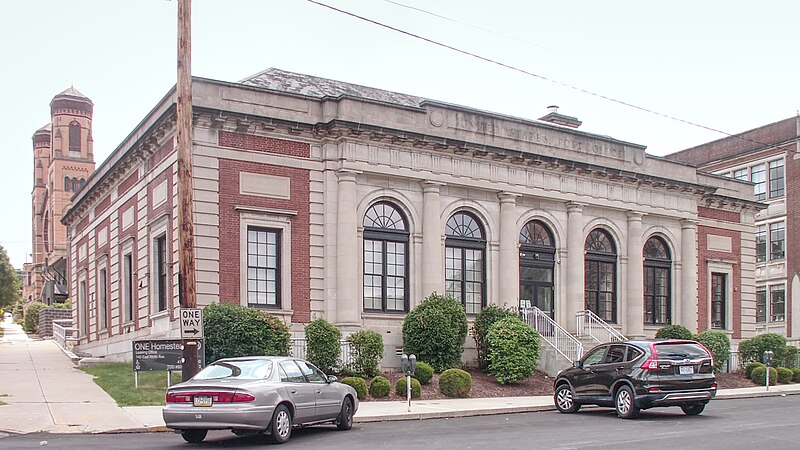
Ten years ago this building was abandoned, and the jungle was rapidly swallowing it (here’s a Street View image from Google Maps). Now it’s beautifully restored and in use.
Addendum: According to the Pittsburgh History and Landmarks Foundation, this post office was built in 1912, with James Knox Taylor listed as architect; but since he was Supervising Architect of the Department of the Treasury, we don’t know how much he had to do with the design. It is certainly true that the designs coming from his office had a certain similarity, implying that he was the dictator of taste if not the architect of the details.
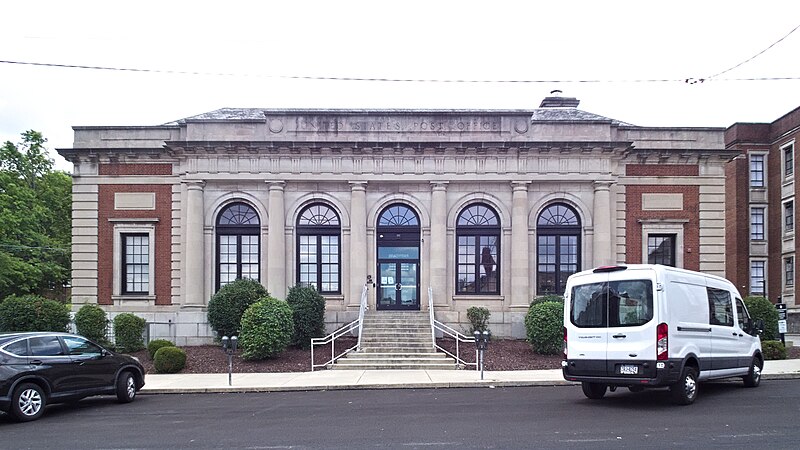
That white van pulled in just before old Pa Pitt got into position for this picture. Sometimes we think it might be worth our while to invest in a tow truck. Yesterday we visited McKeesport, a city that has suffered much and probably still has more to suffer. But when our frequent correspondent “von Hindenburg” bemoaned the tragedy of McKeesport, we promised to lift his spirits with some pictures from Homestead, another Mon Valley city (technically a borough) where the news is more cheerful. We’ll be seeing quite a few pictures from both places over the next few days or weeks, and the comparison is instructive.
Both cities lost their reason for being with the end of heavy industry. In McKeesport, the politicians who had presided over the city’s decline had only one strategy for revival: bring back heavy industry. It was never going to happen. In Homestead, politicians seem to have realized that, if the place had a future, it would be as a bedroom community and shopping area for metropolitan Pittsburgh. The gigantic Waterfront development that replaced the Homestead Works brought in money. Father Pitt criticized it for being isolated from the rest of Homestead, but the prosperity has seeped through anyway, and now the Eighth Avenue business district, once nearly deserted, is filling up with brewpubs and smoothie bars and axe-throwing emporia and other signs of prosperity.
Homestead is far from free of problems. But it is beginning to look like an attractive place to live again. McKeesport has what the real-estate agents call potential, but right now it’s definitely a fixer-upper.
-
Old Main, Duquesne University, Today and in 1888
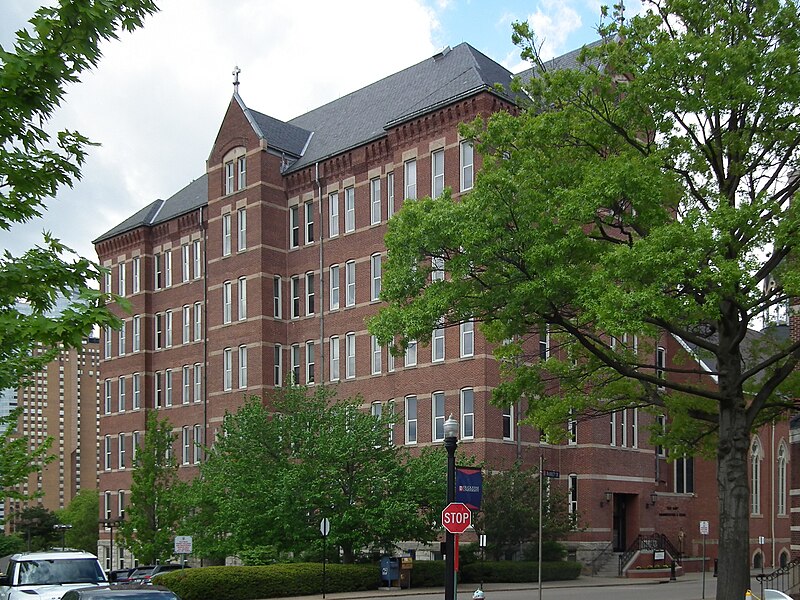

A comparison shows that Old Main has gradually been un-Victorianized over the years, losing chimneys and a cupola. The building is still an elegant and commanding presence on campus, though inside there is nothing left on the main floor to indicate that it was built before the twenty-first century. It has been old Pa Pitt’s observation that Catholic universities tend to treat old buildings as embarrassments rather than assets.
-
Masonic Temple, McKeesport

An imposing presence on the McKeesport skyline, the Masonic Temple has changed very little since it was built. It has lost its cornice, which is the most vulnerable part of a Beaux-Arts palace like this, but otherwise retains most of its decorations, as we can see by comparing it to this old postcard from the “PowerLibrary” collection.

Here are a few of those decorations close up:




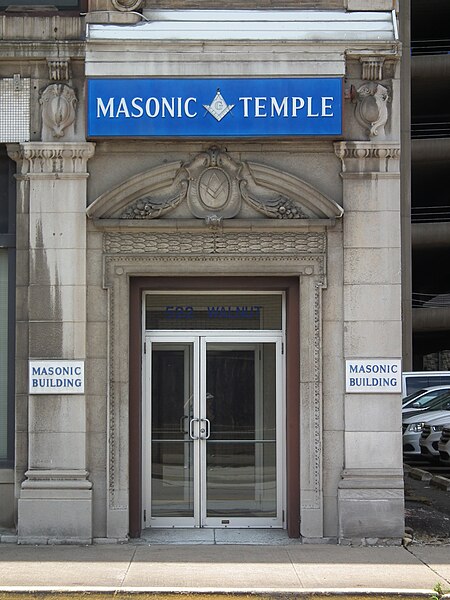

Perhaps even more imposing from a block away.
We’ll be seeing much more of McKeesport in the days and weeks to come. It is a city for which old Pa Pitt harbors an unreasoning love—perhaps the only kind of love McKeesport can inspire at the moment. In its day, it was a metropolis in its own right, and it was filled with the work of distinguished architects; but no city in the area has suffered more, with the possible exception of Braddock. Yet, though much has vanished, so many beautiful buildings remain that it would be possible to set up a site like Father Pitt’s just for McKeesport.
Addendum: With a fair degree of certainty, thanks to a Press puff piece on local architects in 1905, we can identify the architect as Harry Summers Estep. “Recently, in a competition with more than a dozen other architects, he was awarded the prize for best perspective view submitted for the new Masonic temple to be built at McKeesport. The building will cost about $120,000 when completed and will be, for its size and purpose, one of the best buildings in the State.”
3 responses
-
The 2300 Block of Sarah Street

An album of fine Victorian houses from one block of Sarah Street on the South Side. These are not all the distinguished houses in this block: these are just the ones Father Pitt managed to get good pictures of in an after-sunset stroll.
Since we have fourteen pictures in this article, we’ll put the rest below the metaphorical fold to avoid weighing down the main page.
(more…) -
Litchfield Towers from Forbes Avenue
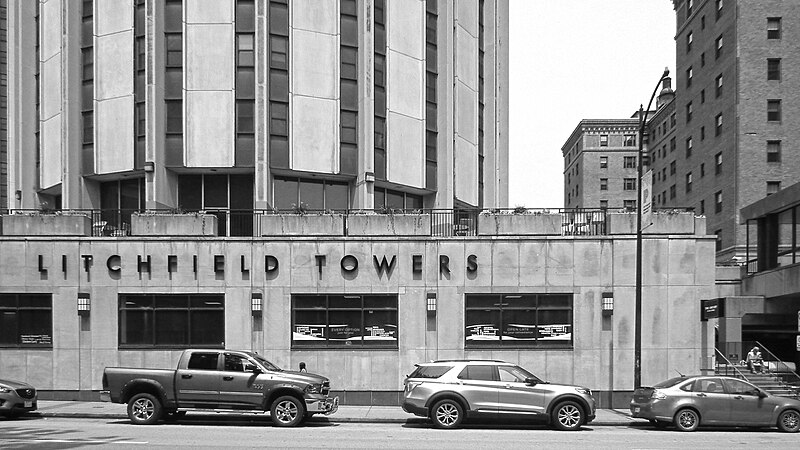
To old Pa Pitt’s eyes, International Style architecture always looks best in black and white. Indeed, he has sometimes wondered how much the architects were subconsciously influenced by the desire to make a building that looked good in a photograph.

-
Schenley Quad, Oakland

Originally the Schenley Apartments, but now Schenley High School has been turned into apartments as the Schenley Apartments, so using the original name would be confusing. This huge complex was built in 1922 as luxury apartments to go with the Hotel Schenley. The architect was Henry Hornbostel, with the collaboration of Rutan & Russell, the original architects of the hotel. In 1955 the University of Pittsburgh bought the Schenley Apartments (for less than they had cost to build in 1922), and since then the buildings have been Pitt dormitories. Above, we see the complex from the grounds of Soldiers and Sailors Hall; below, the steps up from Forbes Avenue.

Since we have a large number of pictures, we’ll put most of them behind a “Read more” link to avoid weighing down the main page of the site.
(more…)



